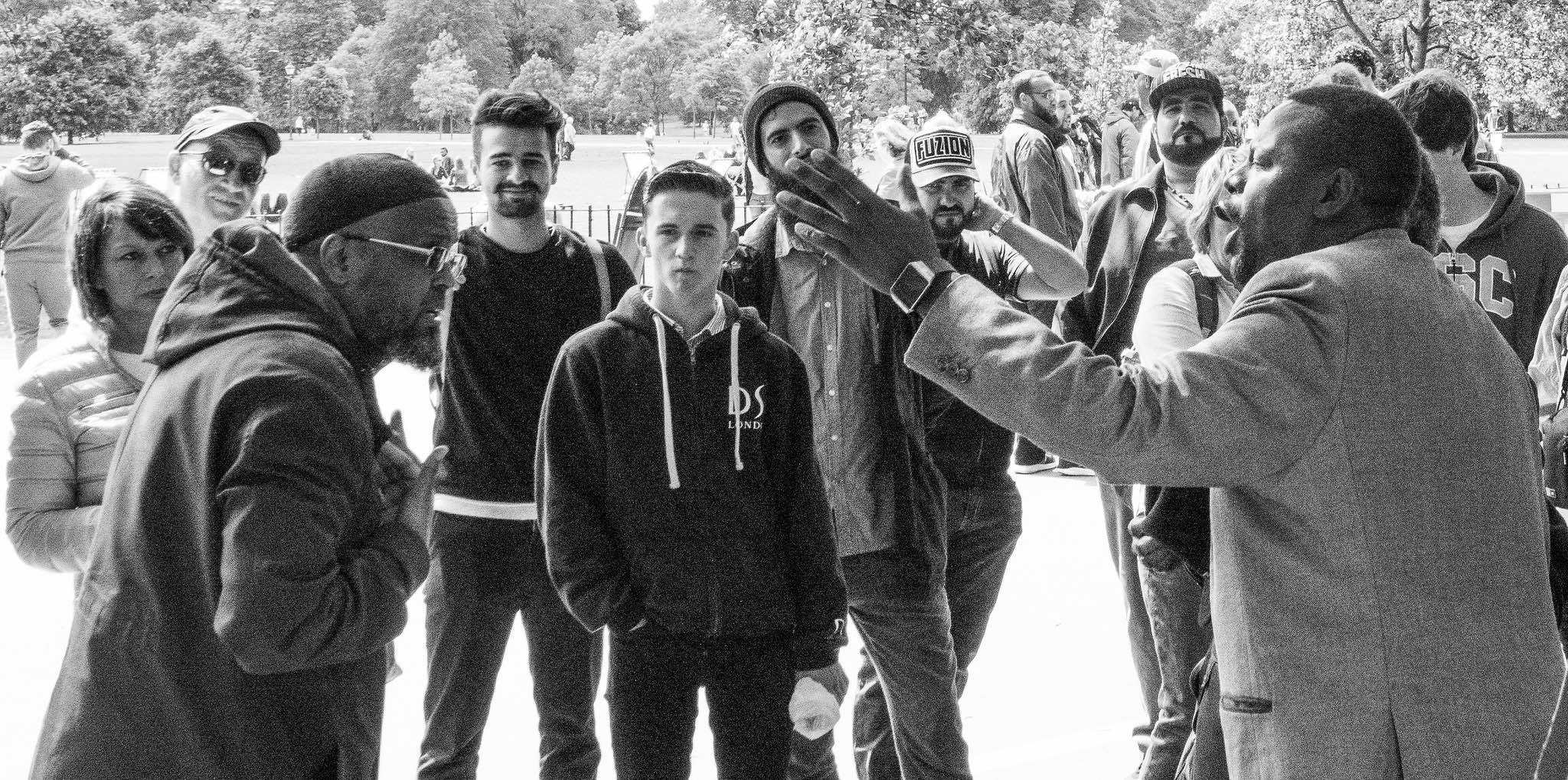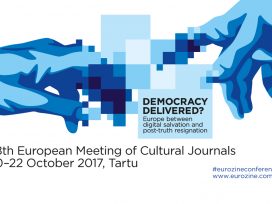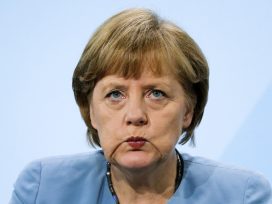We are becoming adults: It is already four years since the German language admitted into its rich vocabulary, by means of the twenty-sixth edition of the prestigious Duden dictionary, the English word shitstorm. And although the expression has not yet taken hold among Spanish-speakers, the practice of it is as popular here as in other liberal public spheres elsewhere. Shitstorm: without any need for coordination, a group of people insult or otherwise dismiss another media user, public figure or company because of something they have done or said on social media or anywhere else. A textbook example is the reaction to the interview given by the Spanish actress Paula Echevarría to Zeleb, a digital platform devoted to celebrity culture: an avalanche of denigratory tweets fell upon her because of what was interpreted as an insufficient defence of the cause of feminism. There are also less glamorous options: after inviting the public to send in ideas in a competition to design a limited edition of one of their products, the German detergent brand Pril unleashed the ire of those who took part by rejecting the one that got the most votes – ‘it tastes better if it tastes like chicken’ – due to its mocking tone. Dazzled by the public reaction, however, the company produced one hundred and eleven bottles with an image of an enraged monster on them, and distributed them in a lottery via Facebook. It’s better to laugh than cry.
Naturally, one example does not represent a whole social phenomenon; except when it actually does. Shitstorms are an expression of everything that has appeared to be going badly in the digitalization of the public sphere. They are a symptom of broader tendencies that present us with a disturbing question: could the internet destroy democracy? Other manifestations of the same underlying problem can help to substantiate the accusation: disintermediation, ‘fake news’, post-factualism, the crisis of traditional media, sentimentalization. The trajectory is similar to that of other communication technologies, from the telegraph to the telephone, which were also greeted initially as beneficial forces for democracies and harbingers of perpetual peace. The point is that we tend to believe that easier communication will lead to better understanding. It is therefore understandable that disappointment with the current state of things is greatest among those who had placed the greatest hopes in the deliberative power of the new media. John Keane has spoken openly of ‘media decadence’: a harsh and inhospitable reality in which the communications media devote themselves entirely to promoting intolerance of varied opinions, the repression of public scrutiny of power, and the cultivation of a blind acceptance of ‘the way things are’.
For those who never thought that digitalization would bring with it better democracy, by contrast, the situation is not so desperate. Among other reasons, this is because not all contemporary ills can be attributed to the influence of digitalization. Are we certain that Trump won because he has a Twitter account, that the generational gulf revealed by Brexit would not exist without Facebook, or that facts were more decisive than emotions in the democracies of years ago? Not even populism, which is undoubtedly strengthened by the direct relationship charismatic leaders can now establish with their followers, is a new phenomenon. The same can be said of illiberal tendencies, neo-authoritarianism or the crises over migration. And however much of a novelty climate change may be, it does not seem that Snapchat has had much to do with it. The internet is not guilty, then, of everything that is happening to democracies.
A second reason for caution is the observation that we should not confuse the whole with one of its parts, that is, digitalization with social media. The effects of the internet on democracy do not end with the modes of public conversation. We have to note too the reduction in the costs of cooperation, which makes it much easier to create an organization, join a movement or take part in a public campaign. This has led to an increase in political participation, however superficial it might seem at times, incorporating groups previously resistant to it (such as the young, or members of ethnic minorities). Information is also more accessible, including that provided by public authorities. For politically active individuals, wherever they may be, everything is easier.
Understanding digital difference
This said, the transformation of the public sphere caused by the process of digitalization does present aspects of concern, the effects of which upon democracy cannot be dismissed, given the key role played in the latter by public opinion. For the late Giovanni Sartori, in a representative system public opinion is called upon to fill the vacuum created when citizens elect their representatives; it is by means of public opinion that the sovereign people say something, exerting influence through this channel upon the government. There is no liberal democracy without public opinion; nor is there public opinion without liberal democracy, since this creates the conditions necessary for this opinion to take shape. But, although the regulative ideal of public opinion – to a large extent formulated by the German philosopher Jürgen Habermas – suggests a persuasive exchange of arguments between rational citizens, the reality is that we cannot expect a public conversation that is overly sophisticated. It is opinion and not knowledge for a reason: for the majority of citizens, politics is a marginal matter regarding which they scarcely search for information. On top of that, the influence of the emotions on our perceptions and decisions has shown itself to be greater than had been expected.
This is why we have representative democracies instead of direct democracies: public opinion influences governments, but does not decide for them. However, there is, clearly, a correlation between the quality of public opinion and the quality of democracy. This should be no surprise, for the way in which we speak about collective problems forms part of the way we deal with them. From which we can deduce that the digital disruption of public conversation is of the greatest significance for democracy.
So what has happened? What does the phenomenon that Russell Neuman has called ‘the digital difference’ consist of? What has changed so that nearly everything is changing? To begin with, the internet and the smartphone have turned every individual into someone who both consumes and produces content online; a potential ‘prosumer’. In the apt expression of Manuel Castells, we have gone from mass communication to mass self-communication: from a vertical structure to a horizontal plane. Or, following Neuman’s metaphor, from a structure based on pressure from above to another in which messages are ‘pulled’ from below. The users pull in many different ways: writing on social networks, producing blogs, participating in digital forums (from TripAdvisor to discussion sites about cars), commenting on the news on the websites of traditional media, consuming some of the innumerable projects created in new media’s wake (from the right-wing site Breitbart to the youth-oriented Vice, via sensationalist news sites such as Spain’s OK Diario, not to mention all the websites specializing in cinema, comics, entomology, big-game hunting…), sharing content with others through chats and social networks…
While it once made sense to speak of a dialogue between the traditional media and their consumers, today we find ourselves with a ‘polylogue’ in which conversations criss-cross and overlap each other, but can also run along parallel paths without ever converging. Hence some have looked back to the image of the salons of the Enlightenment to explain the change that has come about in the public sphere, suggesting we might have regressed to a previous time in which fragmentation was the dominant feature. A disordered conversation!, However, there never was just one public sphere, but many; Tim Wu has explained that the current state of dispersal was first tested in the emergence of cable television, which for the first time created themed channels that competed for citizens’ attention while potentially reducing the extent of a world shared by all. It was around that time, in 1971, that the economist Herbert Simon formulated an idea which has now been fully realized, that ‘a wealth of information creates a poverty of attention’. And the more this becomes so, the more ferocious is the competition to grab this attention, as evidenced by the increasing sensationalism of headlines in even the most serious newspapers.
However, we should not exaggerate, either. Anyone who has experienced the difference between watching a film scheduled on one of the main channels and choosing a dvd from their own shelves knows that the simultaneous nature of modern media provides us with an emotional bonus. This can clearly be seen in the parasitic nature of social networks, whose users spend so much time commenting on some incident or media episode that has appeared offline. Pity the poor souls who haven’t seen the most recent production on hbo! Digitalization has not only modified the way in which we are informed or take part in public conversation, it has also altered the way in which we relate to reality. Roger Silverstone wrote that we are living in a ‘mediapolis’, a place where the media are intertwined with our ways of seeing, being and acting, without quite replacing the world of lived experience. We do not live with the media, Mark Deuze has added, but in the media. And in fact, we wait dependently upon them: their simultaneous presence creates a state of suspense that impels us to remain in contact with the digital flow. How can we get out of the way of this tide?
This immediacy of participation also distorts our sense of what it is to be informed, since nowadays all of us think that we are, without exception. However, we have to be careful with this ‘we’. The demographic configuration of western societies produces, by a natural process, a breach between the connected and the disconnected. Or less connected: talking to a grandchild via Skype is not the same as following what they are doing on Twitter. In the last elections in the United States, for example, television was still the form of media most widely used to gain information (by 24 per cent, compared to 14 per cent for social networks). For the voter committed to his or her moral tribe, in contrast, the social networks have become the habitual instrument of political action, which in addition allows them to establish a direct relationship with the relevant political leader. For Cornel Sandvoss, this relationship has begun to resemble that of a fan; a bond of affection based on identity is established that reinforces the plebiscitary nature of contemporary politics, whose clearest manifestation is in the different expressions of populism. Consequently the figure of a ‘political fan’ emerges, confirming the new quality of politics as a mass entertainment. There is another way of reading this phenomenon, though, which raises the idea of the ‘public happiness’ that, for Hannah Arendt, is experienced by those who commit themselves to any form of collective action. Of course, both realities coexist, since digitalization does not generate homogeneous outcomes, but rather a whole plurality of effects.
Downsides of digitalization
The mediatization of our societies reinforces the subjection of democracy to the law of the largest number. In the digitalized public sphere there is a war of meanings, and those who succeed in imposing their own – whether in defining patriarchy, evaluating Spain’s transition to democracy, or explaining the economic crisis – obtain political capital that can be translated into votes or influence. Perception is king. Consequently, the negative effects that the social networks can have upon the public conversation matter because of their scale: if ten neighbours believe a false news report, it’s of no importance; if ten million do so, this is another thing. In broad terms, these effects are the following:
- Balkanization: a tendency to consume news items shaped in accordance with pre-existing political preferences. Citizens inhabit cognitive bubbles in which they consume information and associate with other people already in alignment with their beliefs. This communicative structure will have the consequence of reinforcing the natural tendency among individuals to moral tribalism, or an unreflecting adherence to one’s own group.
- Post-factualism: the tendency for facts to lose persuasive force by comparison with emotions and beliefs, which thus become the stronger element in determining the political decisions of individuals. The algorithms employed by the major news aggregators, from Google to Facebook, have reinforced this effect by prioritizing our exposure to information coming from media or other users that match our tastes. The confirmatory bias that makes us feel good when we read something we already agree with can then operate most effectively.
- Fake news – ‘conspirationism’: the horizontal nature of digital communication facilitates the circulation of false news stories and conspiracy theories, which are spread – without passing through any kind of epistemic or judgmental filter – among interconnected individuals or groups who share the same belief system or electoral preferences.
- Post-censorship: the unregulated restriction of freedom of expression that develops due to the aggression with which many users behave on social networks, which has the effect of spontaneously suffocating opinions they disagree with. This is what Byung-Chul Han has called a ‘swarm democracy’. Although it is not censorship in the strictest sense of the word, since this can only be exercised by public authorities, this lack of civility restricts freedom of speech de facto and turns social media into the kingdom of the most excited.
- Disintermediation: the decline of the institutions that used to control or filter the information that reached citizens at the horizontal level of mass communication, from political parties to food critics. The traditional mediators are losing ground in the face of a new form of relationship between the citizen and political leaders, as we can see in the case of Trump, or between citizens and fellow-citizens (whether they are Twitter stars, bloggers or commentators who spread their opinions on ad hoc platforms). This disintermediation is also seen in the criticisms that are made of representative mechanisms and the associated calls for more direct participation by means of assembly-based or plebiscitary procedures.
- Electoral personalization: as if in an equivalent in reverse of the Daily Me that for Nicholas Negroponte would allow each reader to personalize his or her daily consumption of news, electoral strategists have been using mass data and digital communications to personalize the messages they direct at particular social groups (single mothers, unemployed divorcees, urban hipsters). This accentuates the fragmentation of the social fabric that appears to be a trademark of democracy in the digital era.
One can therefore appreciate that, as the Oxford Internet Institute has suggested, social networks are not merely sources of information, but provide the new structure for political conversation. These are technologies that encourage our most tribal instincts, reducing the diversity of opinions to the ones we see exposed upon them, and facilitating ‘selective exposure’ to news and points of view that fit with our own. From this standpoint, the internet could be a threat to liberal democracy, through its ability to distort the public opinion upon the good health of which any representative regime has to reside. Most of all when this deterioration is combined with an undermining of the legitimacy of institutions of mediation and mistrust of representative mechanisms themselves.
Video did not kill the radio star
It would be premature, for all this, to give in to pessimism. There have always been false news reports and conspiracy theories, many of them produced by anonymous sources, which circulated with less speed but identical import. Nor is it clear that the digital consumer of news finds him- or herself more isolated than the traditional consumer, given the quantity of fortuitous encounters with information or opinions that we disagree with that the internet makes possible. Equally, although an aggressive polarization can be reinforced by the structure of digital communications, this could also be explained by the need parties have to differentiate themselves in a context of convergence in the political centre. As to personalized propaganda, this should not be exaggerated: as The Economist has pointed out, anyone who has been pursued online by the ghost of washing machine that they already bought a week earlier knows that Big Brother will take a good while yet to arrive.

Photo: Adrian Betteridge. Source: Flickr
Is democracy as a whole in a crisis induced by the digital revolution, then, or does this only apply to the particular version of democracy associated with the classical model of public opinion? In other words, does public opinion resemble the Greek agora that we have idealized, or a rowdy, cacophonous public square? For Davide Panagia, the hyper-rationality associated with Habermas has little to do with the realities of democracies that are by definition noisy, emotional and conflictive. Digitalization has perhaps only exposed the distance that exists between the democratic ideal and its practical reality, which is also, naturally, the distance between the ideal citizen and the real citizen, and equally the one visible between rational deliberation on the public good and the kind of human communication that by a natural process incorporates the identities and interests of different social groups. What a disappointment!
Nevertheless, it does not follow from this that liberal democracy is under threat or on its way to being replaced. Rather, the transformations that are in progress are more likely to confirm its validity, at least on a theoretical level: there is no more appropriate political regime for wrestling with rival conceptions of what is good, the struggle between emotionally-charged identities or the growing disorganization of public debate. Only a society that is open, sceptical and flexible can adapt successfully to these new phenomena, even if it takes time to get accustomed to them. Let us, then, follow the example of the Pril brand, which saw how to ride out its own shitstorm: let’s respond with good humour.










